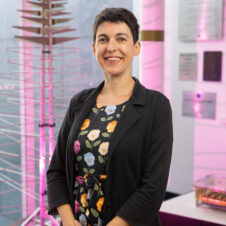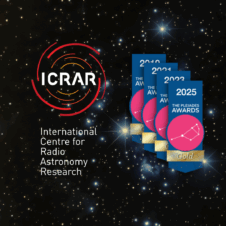ICRAR researchers Dr Maria Rioja and Dr Richard Dodson share their work with the Korean VLBI Network (KVN) and the ATCA below.
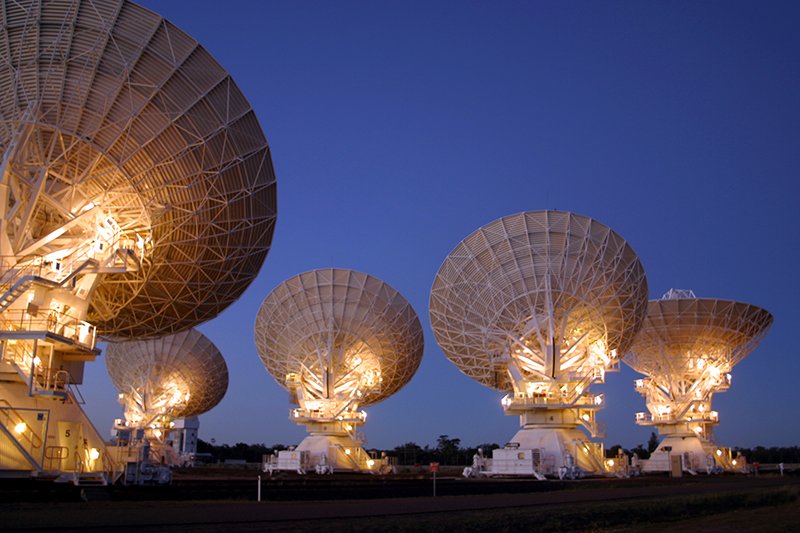
The Australia Telescope Compact Array (ATCA) in Narrabri, New South Wales, operated by CSIRO. Image Credit: David Smyth and CSIRO.
The current focus of our tests is to perform mm-VLBI observations with the Korean VLBI Network (KVN) at 43 and 86GHz. The 7900 km baseline (distance) between Australia and Korea provides resolutions of 80 micro-arcseconds at the higher frequency, or 20 billionths of a degree. This is sufficient to resolve Neil Armstrong’s footprints on the moon from Earth; an astounding level of detail for a radio telescope.
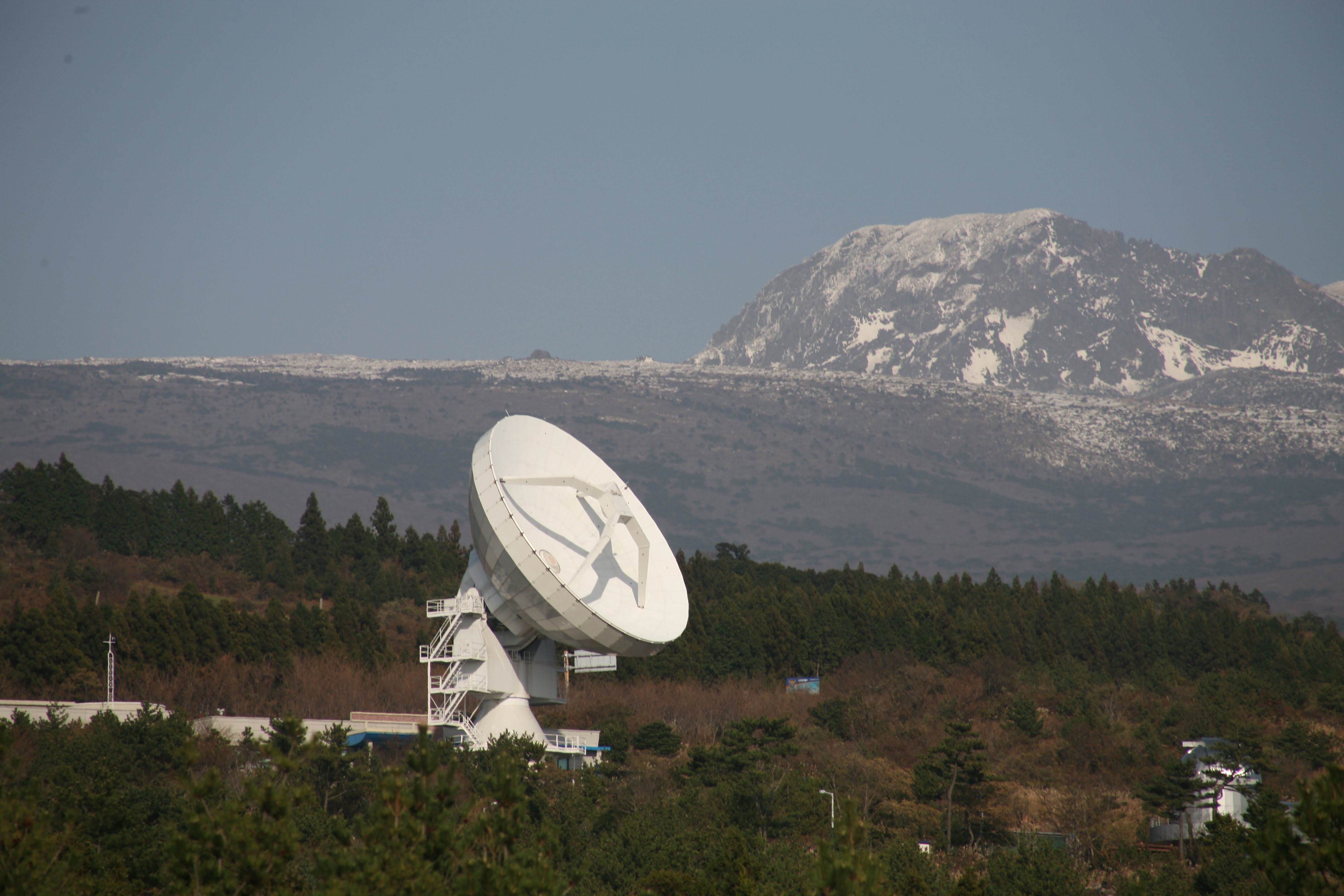
One of the three KVN mm-VLBI telescopes. This one, Tamna station, is on Jeju island and is pictured against Halla-san the highest mountain in South Korea. Image Credit: KVN, KASI.
South Korean researchers have developed a unique quasi-optics system for their array of three 21m radio telescopes, which form the first dedicated mm-VLBI array in the world. This system allows the simultaneous observations of all four of their observing bands: 21, 43, 86 and 129GHz. Such a system allows the calibration at a lower frequency to be used for the observations at the higher and more challenging frequency.
Simultaneous dual frequency observations also make possible sensitive and astrometric VLBI at these very high frequencies and resolutions, thus providing all the benefits of phase referencing to this frequency domain. These are the frequencies where we expect exciting science, such as the structures (perhaps shadows) around Black Holes, to be revealed. Therefore the driver for our tests was to provide global baselines to the KVN in a compatible multiple frequency mode, using the ATCA split into a subarray, where the two halves are observing different frequencies.
In September this year (2014) we performed a demonstration of simultaneous multi-frequency demonstration of mm-VLBI between ATCA and the KVN. Currently this is possible for the 43 and 86GHz pair only, but should be possible for 22 and 43GHz shortly. The results are presented below, showing the uv-coverage from KVN (Korea), VERA (Japan) and ATCA (Australia) network of telescopes, for the recent observations of M87.
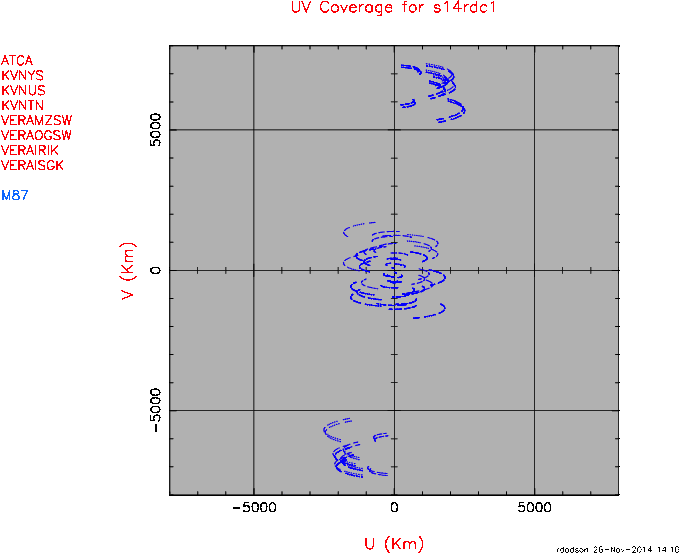
UV-Coverage from VERA, KVN, and ATCA for radio galaxy M87, which shows a good sampling on all baseline scales.
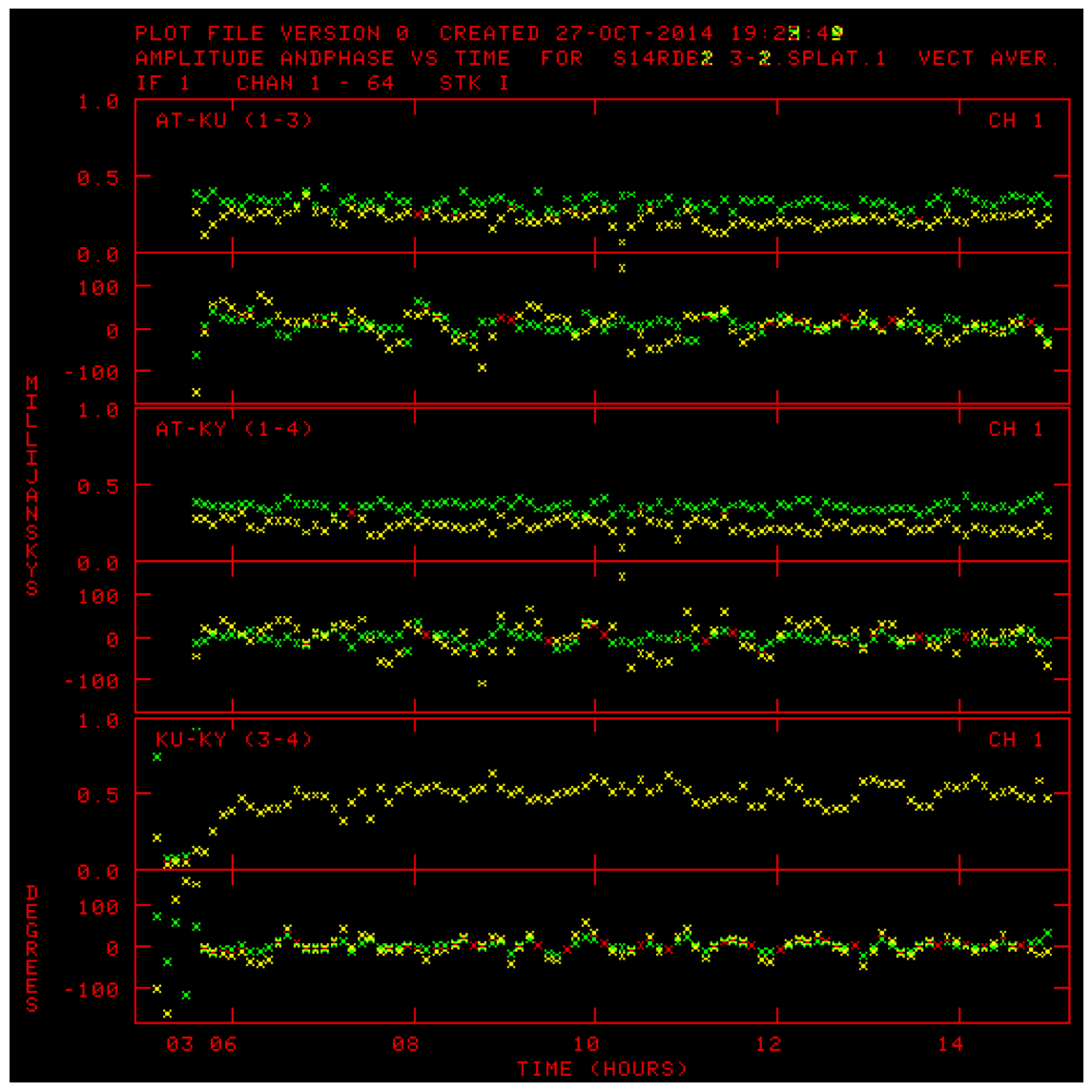
Overlay of one scan of simultaneous 43 and 86GHz data from KY to ATCA and KU on 3C273. The 43GHz data (yellow) is self calibrated and the 86GHz data (green) is FPT calibrated (i.e. using the scaled solutions from the 43GHz observations).
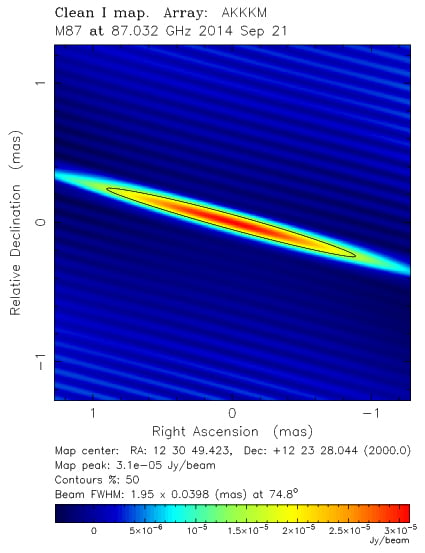
The jet coming from the central black hole in galaxy M87, as resolved by the connected Korean and Australian telescopes as part of the experiment.
Future experiments will be performed with a larger global network of telescopes capable of simultaneous multi-frequency mm-VLBI. This growing list includes, in the near term, the four Japanese antennas in the VERA array and the large 40m Spanish antenna Yebes. In the longer term the new Chinese 64m in Shanghai, two Italian antennas, the 65m in Sardinia and the 32m in Noto, and the VLBA antenna Mauna Kea in Hawaii have all expressed interest and are looking at developing compatible instrumentation. VERA has recently retro-fitted a demonstration KVN Quasi-optics system to one their telescopes, Yebes will be performing their first VLBI tests in December with another QO system. ATCA, using a sub-array mode, will also be able to join these tests, and deliver much better coverage of the Southern Hemisphere sky.
This work was in part funded by the Australian Department of Foreign Affairs and Trade.
